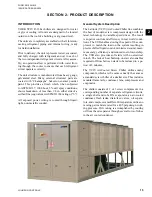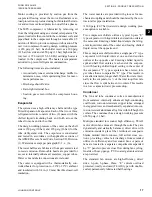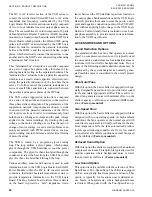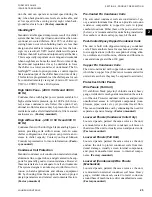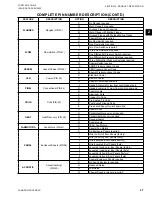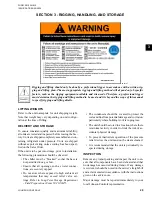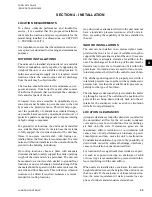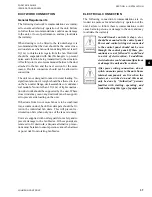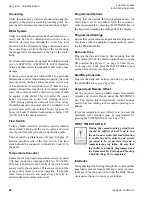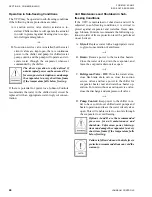
JOHNSON CONTROLS
29
FORM 201.23-NM2
ISSUE DATE: 09/25/2020
3
SECTION 3 - RIGGING, HANDLING, AND STORAGE
LIFTING WEIGHTS
Refer to the unit nameplate for unit shipping weight.
Note that weight may vary depending on unit configu-
ration at the time of lifting.
DELIVERY AND STORAGE
To ensure consistent quality and maximum reliability,
all units are tested and inspected before leaving the fac-
tory. Units are shipped completely assembled and con-
taining refrigerant under pressure. Units are shipped
without export crating unless crating has been speci-
fied on the Sales Order.
If the unit is to be put into storage, prior to installation,
the following precautions should be observed:
• The chiller must be “blocked” so that the base is
not permitted to sag or bow.
• Ensure that all openings, such as water connec-
tions, are securely capped.
• Do not store where exposed to high ambient air
temperatures that may exceed relief valve set-
tings. Refer to
Long-Term Storage Requirement
- Field Preparation (Form 50.20-NM7)
.
• The condensers should be covered to protect the
coils and fins from potential damage and corrosion,
particularly where building work is in progress.
• The unit should be stored in a location where there
is minimal activity in order to limit the risk of ac-
cidental physical damage.
• To prevent inadvertent operation of the pressure
relief devices the unit must not be steam cleaned.
• It is recommended that the unit is periodically in-
spected during storage.
INSPECTION
Remove any transit packing and inspect the unit to en-
sure that all components have been delivered and that
no damage has occurred during transit. If any damage
is evident, it should be noted on the carrier’s freight bill
and a claim entered in accordance with the instructions
given on the advice note.
Major damage must be reported immediately to your
local Johnson Controls representative.
Rigging and lifting should only be done by a professional rigger in accordance with a written rig-
ging and lifting plan. The most appropriate rigging and lifting method will depend on job specific
factors, such as the rigging equipment available and site needs. Therefore, a professional rigger
must determine the rigging and lifting method to be used, and it is beyond the scope of this manual
to specify rigging and lifting details.
LD19197
Summary of Contents for YCIV Series
Page 14: ...JOHNSON CONTROLS 14 FORM 201 23 NM2 ISSUE DATE 09 25 2020 THIS PAGE INTENTIONALLY LEFT BLANK...
Page 32: ...JOHNSON CONTROLS 32 FORM 201 23 NM2 ISSUE DATE 09 25 2020 THIS PAGE INTENTIONALLY LEFT BLANK...
Page 40: ...JOHNSON CONTROLS 40 FORM 201 23 NM2 ISSUE DATE 09 25 2020 THIS PAGE INTENTIONALLY LEFT BLANK...
Page 50: ...JOHNSON CONTROLS 50 FORM 201 23 NM2 ISSUE DATE 09 25 2020 THIS PAGE INTENTIONALLY LEFT BLANK...
Page 325: ...JOHNSON CONTROLS 325 FORM 201 23 NM2 ISSUE DATE 09 25 2020 NOTES...

